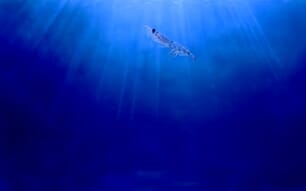Table of Contents
- Tilapia Farm Business Management
- Enterprise Profitability
- Monitoring Business Performance
- Measuring Efficiency
- Compiling a Business Plan
- Investment Analysis
- Risk Analysis Through the Use of Risk Software
- Summary and Conclusions
- Appendix: Record Keeping
Tilapia Farm Business Management
This manual will provide a practical overview of economic and financial indicators and analyses to use to better understand the performance of the tilapia farm business. This should assist farm owners and managers to make more informed management decisions on tilapia farms.
The examples used in this training manual are all based on data obtained from different tilapia farms in Kenya during the period 2000-2005. The sample budgets and analyses are based on prices and cost conditions in the country at that time with some assumptions.
Enterprise Profitability
The purpose of a business is to make money, or to generate profits. This would seem to be a simple and straightforward concept. Nevertheless, there are several different ways to look at the profitability of a business activity. The particular type of analysis to be done will vary with the time frame selected, the scope or scale of the activity being selected, and the availability of data to do the analysis.
This manual will first present an analysis of the profitability of tilapia farming under the assumption that this is a new activity for the individual. The individual is not currently in the tilapia business. The first step for this individual would be to look at whether or not tilapia farming is profitable in a general sense in a typical or representative year.
For this analysis, the individual would use an enterprise budget analysis to see whether tilapia farming was profitable or not. Profits would be determined by finding whether or not revenues generated from the sale of tilapia were greater than the sum of all costs involved in tilapia production. Average or typical values would be used for all costs and prices in the analysis.
The manual will then analyze in a general way whether or not it would be profitable to make a relatively small change in the management of the farm. This change might be to expand existing hectares by building more ponds, introduce polyculture with other species, change the interest
rate for loans, or it might be to change the type of feed. The manual will explain how the proposed small change can be analyzed with a partial budget. In this case, all the new costs, added benefits, reduced costs, or reduced benefits that would result from the change would combine to see whether or not, overall, the benefits exceed the costs.
For a farm that is already in business, the best way to measure profit is to evaluate it on an annual basis using an income statement. The income statement is similar to an enterprise budget except that it uses actual farm revenues and expenses rather than average or typical prices and costs. If the total farm revenues from sales generated for the period are greater than the costs, then profits were generated for that period.
Many individuals plan over a horizon broader than one year and want to know how profitable their capital investment is over time. For this analysis, an indicator known as the internal rate of return is used. It shows the returns to the capital investment over the life of the investment. These returns measure the profitability of the investment capital. Finally, the manual contains a section on risk analysis in tilapia farming. The incorporation and assessment of risk levels in enterprise budgets will also be demonstrated through the use
of a risk analysis computer program (Crystal Ball®).
Enterprise Budget Analysis
The first step in the analysis of the economics of tilapia farming is to determine if it is possible to make money generally from this type
of business activity. For this, the individual must perform an analysis called an enterprise budget analysis. An enterprise budget provides a generalized snapshot of the costs and returns of a particular enterprisein this case tilapia productionfor a particular period of time. Figure 1a presents an example of a tilapia farm budget developed with data from Kenya.
It is important to think about the time period and the budgetary unit carefully. In aquaculture, a common budgetary unit is one pond of an average size for the type of business being analyzed. The example in Figure 1a is a whole-farm budget for a 1-ha tilapia farm in Kenya. Time periods used to develop enterprise budgets can be based on one production cycle, but are most often developed for a one-year period, as is the case in Figure 1a. The basic headings of an enterprise budget can be seen in Figure 1a. The first column lists the various items to be included. The second column lists a description of each item.
It is important that each item be thoroughly described. For example, gross returns (income generated from the sale of tilapia) on most tilapia farms in Africa will come from sales of live tilapia. Costs are divided into the categories variable (those that vary with production; also called operating costs) and fixed (costs that will be incurred regardless of the level of production; also called ownership costs). Under variable costs, it is important to specify whether fingerlings are mono-sex or mixed-sex because prices and production performance will be different. Feed descriptions should specify the percentage of protein, and the fertilizer description should specify the type and formulation of fertilizer. The description of each item should provide sufficient information so as to be able to identify the prices and quantities needed. Fixed costs typically require additional supporting tables to identify depreciation costs and interest levels.
Further Information
To continue reading this report, including tables, click here (PDF)
August 2006


